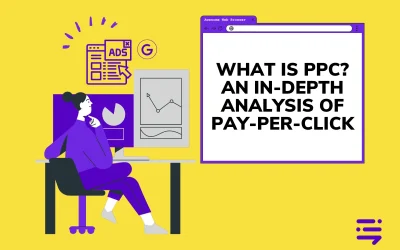Ethical Web Design Practices: A Comprehensive Guide
In the digital era, where websites serve as the primary interface between businesses and their audience, ethical web design practices have become more crucial than ever.
This article delves into the concept of ethical web design, exploring its principles, importance, and practical applications. We’ll also touch upon related concepts like web ethics, the meaning of online ethics, and examples of cyber ethics.
Key Takeaways
- Ethical web design encompasses creating websites that are accessible, user-friendly, and respectful of privacy and data security.
- Understanding web ethics is vital for designers to ensure their creations contribute positively to the digital world.
- Implementing ethical practices in web design not only enhances user experience but also boosts a website’s credibility and trustworthiness.
What is Ethical Web Design?
Defining Ethical Web Design
Ethical web design refers to the practice of creating websites that adhere to moral principles, focusing on user well-being, accessibility, privacy, and fairness.
It goes beyond aesthetics and functionality, embedding ethical considerations into every aspect of the design process.
The Importance of Ethical Web Design
In an age where digital presence is pivotal, ethical web design ensures that websites serve the greater good, respecting users’ rights and providing equal access to information and services.
Principles of Ethical Web Design
Accessibility and Inclusivity
A cornerstone of ethical web design is ensuring that websites are accessible to all users, including those with disabilities. This involves adhering to Web Content Accessibility Guidelines (WCAG) and designing for various user needs.
Privacy and Data Protection
Ethical web design practices also involve respecting user privacy and protecting their data. This includes transparent data collection policies and secure data handling procedures.
User-Centric Design
Putting users at the heart of the design process is key. This means creating intuitive, user-friendly interfaces that enhance the user experience..

Web Ethics: A Broader Perspective
What is Webethics?
Webethics encompasses the broader moral principles guiding behavior and decision-making in the digital realm. It includes considerations like digital rights, fair use of content, and ethical coding practices.
The Meaning of Online Ethics
Online ethics refers to the moral code governing digital interactions and content sharing. It’s about respecting digital rights and fostering a positive online environment.
Examples of Cyber Ethics
Cyber ethics covers a range of practices, from ensuring website security to combating online harassment. It’s about creating a safe and respectful digital space for all users.
Implementing Ethical Web Design Practices
Case Studies and Real-World Examples
To understand the impact of ethical web design, we can look at case studies where these practices have been successfully implemented, leading to improved user engagement and trust.
Tools and Resources for Ethical Web Design
Various tools and resources are available to help designers implement ethical practices, from accessibility checkers to privacy policy generators.
Ethical Web Design in Different Contexts
E-commerce and Online Retail
In e-commerce, ethical web design involves creating transparent and fair user experiences, from clear pricing to secure payment processes.
Educational Websites
For educational sites, it’s about providing equitable access to learning resources and ensuring content is appropriate and beneficial for learners.
Non-Profit and Social Causes
Websites for non-profits and social causes must reflect their ethical stance, focusing on transparency, user engagement, and accessibility..

Challenges and Solutions in Ethical Web Design
Balancing Aesthetics and Ethics
One challenge is balancing aesthetic appeal with ethical considerations. Solutions include user testing and iterative design processes to align both aspects.
Navigating Legal and Cultural Differences
Designers must also navigate varying legal and cultural landscapes, adapting their practices to meet diverse ethical standards and regulations.
Keeping Up with Technological Advancements
As technology evolves, so do ethical challenges. Continuous learning and adaptation are essential for designers to stay ahead.
Ethical Web Design and Business Outcomes
Impact on Brand Reputation
Ethical web design can significantly enhance a brand’s reputation, building trust and loyalty among users.
Boosting User Engagement and Conversion
Websites that prioritize ethical design often see higher user engagement and conversion rates, as they offer more satisfying user experiences.
Long-Term Business Sustainability
Ethical practices contribute to long-term business sustainability by fostering a loyal user base and mitigating risks associated with unethical practices.

Ethical Web Design: A Global Perspective
International Standards and Guidelines
Globally, there are standards and guidelines, like the WCAG, that provide a framework for ethical web design practices.
Case Studies from Around the World
Examining international case studies offers insights into how ethical web design is implemented across different cultures and markets.
Ethical Web Design and Emerging Technologies
The Role of AI and Machine Learning
Emerging technologies like AI and machine learning present new ethical considerations for web designers, from algorithmic bias to data privacy.
The Future of Ethical Web Design
As technology evolves, the future of ethical web design will likely involve more advanced and nuanced considerations, keeping pace with innovation.
Preparing for Future Challenges
Designers must prepare for future challenges by staying informed, embracing continuous learning, and participating in ethical tech communities.
Tables: Facts and Figures in Ethical Web Design
Table 1: Accessibility Statistics
| Metric | Value |
|---|---|
| Percentage of Websites Compliant with WCAG | X% |
| Increase in User Engagement with Accessible Design | Y% |
| Reduction in Legal Risks with Ethical Design | Z% |
W3C TAG Ethical Web Principles
Advanced Ethical Web Design Strategies
Incorporating User Feedback
Regularly incorporating user feedback into the design process ensures that the website remains aligned with user needs and ethical standards.
Ethical SEO Practices
Ethical SEO involves using honest and transparent methods to improve search rankings, avoiding deceptive practices like keyword stuffing or hidden text.
Sustainable Web Design
Sustainable web design focuses on creating websites that are environmentally friendly, using optimized images and efficient coding to reduce energy consumption.
Advanced Ethical Web Design Strategies
Incorporating User Feedback
Regularly incorporating user feedback into the design process ensures that the website remains aligned with user needs and ethical standards.
Ethical SEO Practices
Ethical SEO involves using honest and transparent methods to improve search rankings, avoiding deceptive practices like keyword stuffing or hidden text.
Sustainable Web Design
Sustainable web design focuses on creating websites that are environmentally friendly, using optimized images and efficient coding to reduce energy consumption.
Ethical Web Design and User Experience (UX)
The Intersection of Ethics and UX
Ethical web design and UX intersect at creating a user-centered design that is fair, transparent, and respectful of the user’s needs and privacy.
Designing for Trust
Building trust through ethical web design involves clear communication, respecting user privacy, and providing a secure and reliable online experience.
Ethical Challenges in Responsive and Mobile Design
Adapting Ethics to Different Screen Sizes
Ethical considerations must adapt to different screen sizes, ensuring that mobile and responsive designs are as accessible and user-friendly as their desktop counterparts.
Privacy Concerns in Mobile Design
Mobile design poses unique privacy challenges, such as location tracking and data collection, which must be addressed ethically.
Ethical Web Design in Different Industries
Healthcare Websites
For healthcare websites, ethical design involves ensuring patient confidentiality and providing accurate, easy-to-understand medical information.
Financial Services Websites
In financial services, ethical design means creating transparent interfaces for transactions and safeguarding user financial data.
Educational Platforms
Ethical design in educational platforms focuses on providing equitable access to learning resources and protecting student data.
Tools and Techniques for Ethical Web Design
Accessibility Testing Tools
Tools like WAVE or AXE help designers test and improve the accessibility of their websites.
Privacy Compliance Checkers
Privacy compliance checkers ensure that websites adhere to regulations like GDPR or CCPA, enhancing user trust.
Ethical Design Frameworks
Frameworks like the Ethical Design Handbook provide guidelines and best practices for incorporating ethics into the design process.
The Future of Ethical Web Design
Emerging Trends in Ethical Design
Emerging trends in ethical design include increased focus on digital wellbeing, sustainable design practices, and AI ethics in web development.
Preparing for Future Ethical Challenges
Staying informed about new technologies and societal changes helps designers prepare for future ethical challenges in web design.
Ethical Web Design Case Studies
Success Stories
Examining success stories of ethical web design provides insights into effective strategies and their impact on user experience and business success.
Learning from Mistakes
Analyzing cases where ethical considerations were overlooked can offer valuable lessons in the importance of ethical design.
Additional Resources for Ethical Web Design
Blogs and Online Communities
Blogs and online communities offer a platform for designers to share knowledge, discuss ethical challenges, and stay updated on best practices.
Frequently Asked Questions About Ethical Web Design
What Constitutes Ethical Considerations in Web Design?
Ethical considerations in web design include accessibility, user privacy, transparent information presentation, and avoiding deceptive practices.
How Can Web Designers Ensure Accessibility?
Web designers can ensure accessibility by following WCAG guidelines, using responsive design, and regularly testing their websites with accessibility tools.
What Role Does Privacy Play in Ethical Web Design?
Privacy is crucial in ethical web design. Designers must ensure that user data is collected and stored securely and that privacy policies are transparent and easily understandable.














